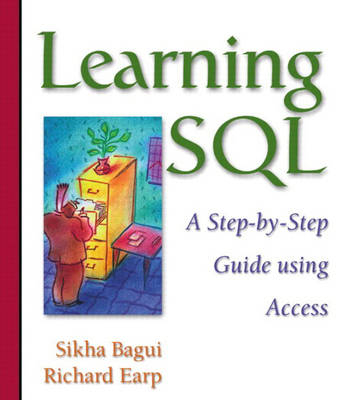
Learning SQL
Pearson (Verlag)
978-0-321-11904-9 (ISBN)
- Titel erscheint in neuer Auflage
- Artikel merken
Learning SQL: A Step-By-Step Guide Using Access is a brief, hands-on tutorial covering the basics of using SQL, as well as using the Access database engine with SQL. It assumes no previous knowledge of programming or databases.
The book focuses on providing an introduction to beginning SQL tasks. Throughout the chapters, readers are taken through various beginning aspects of SQL. At the end of each chapter, a series of exercises is provided to facilitate the practice of these newly learned skills. Throughout the book, common pitfalls and style tips are called out in margin boxes. With this book, readers learn not only the basics, but also gain insight into how these are used by professional Access SQL programmers.
(Each chapter, except Chapter 0, concludes with Exercises.)
0. The Software Engineering Process and Relational Databases.
What is a Database?
Database Models.
A Brief Look at Normal Forms.
What is the Software Engineering Process?
References.
1. Getting into SQL in Access.
Opening up the Student.mdb Database.
Getting into SQL in Access.
Typing in an SQL Query.
Running an SQL Query.
Saving an SQL Query.
Editing a SQL Query in Access.
Viewing Table Designs.
Viewing Data in Tables.
Deleting tables or Queries.
Printing SQL Code and Output from Access.
2. Beginning SQL commands in Access.
The SELECT.
SELECTing Fields.
SELECTing Rows (tuples).
Using Aliases.
Table Qualifiers.
A Convention for Writing SQL Statements.
Few Syntactical Notes about SQL in Access.
3. Creating and Populating Tables.
Creating a Table.
Inserting Values into a Table.
The UPDATE Command.
The ALTER TABLE Command.
The DELETE Command.
Deleting a Table.
Data Types in Access.
The DATE type and DATE Formatting.
4. JOINs.
The JOIN.
The Cartesian Product.
Equi-Joins.
Theta Joins.
Natural Join.
Joining More Than Two Tables.
Outer Joins.
5. Functions.
Aggregate Functions.
Calculating with Fields as Row-level Functions.
Other Functions.
String Functions.
DATE Functions.
6. Query Development and Derived Structures.
Query Development.
Parentheses in SQL Expressions.
Derived Structures.
Query Development with Derived Structures.
7. Set Operations.
UNION and UNION ALL.
The IN and NOT..IN Predicates.
Using IN as a Subquery.
Using NOT..IN.
Approaching the Difference Operation.
8. Joins and Subqueries with Operators IN and NOT IN.
The IN Subquery.
The Subquery as a JOIN.
When the JOIN Cannot be Turned into a Subquery.
More Examples Involving JOINs and IN.
Subqueries with Operators.
9. Aggregates, GROUP BY, HAVING; NULLS in Grouped SELECTs.
Aggregates/Column Functions.
GROUP BY Clause.
GROUP BY and ORDER BY Clauses.
HAVING Clauses.
HAVING and WHERE.
Functions of Functions, GROUP BY and HAVING.
Auditing IN Subqueries.
Nulls Revisited.
10. Correlated Subqueries.
What are Non-correlated Subqueries?
Correlated Subqueries.
Existence Queries and Correlation.
NOT EXISTS.
The Universal and Existential Qualifiers.
11. Indexes and Constraints on Tables.
The “Simple” CREATE TABLE.
Indexes.
Constraints.
Appendix 1. The Student Course Database and Other Tables Used in This Book.
Glossary of Terms.
Glossary of Important Functions.
Index of Terms.
Index of Important Functions.
| Erscheint lt. Verlag | 13.3.2003 |
|---|---|
| Sprache | englisch |
| Maße | 202 x 231 mm |
| Gewicht | 596 g |
| Themenwelt | Mathematik / Informatik ► Informatik ► Datenbanken |
| Informatik ► Office Programme ► Access | |
| Mathematik / Informatik ► Informatik ► Software Entwicklung | |
| ISBN-10 | 0-321-11904-5 / 0321119045 |
| ISBN-13 | 978-0-321-11904-9 / 9780321119049 |
| Zustand | Neuware |
| Informationen gemäß Produktsicherheitsverordnung (GPSR) | |
| Haben Sie eine Frage zum Produkt? |
aus dem Bereich


